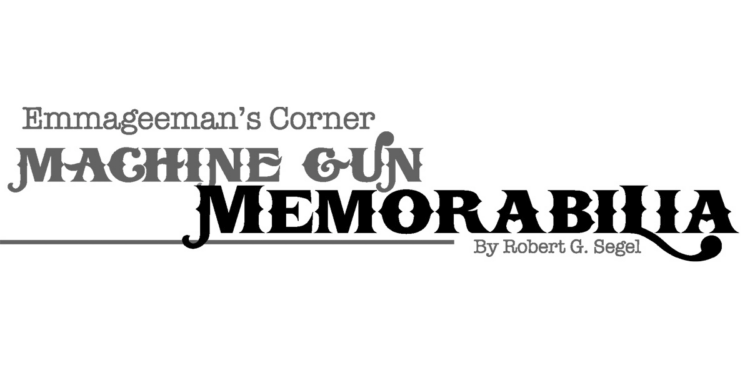By Robert G. Segel
World War I-era canteen with commercially made souvenir trench-art-style artwork. The canteen is made by the Worcester Pressed Aluminum Co., Worcester, Massachusetts, and is patent-dated May 4, 1915, with stopper. Highly detailed period artwork on both sides of the canteen commemorating the service of the 23rd Infantry Regiment of the 2nd Division. On one side in the center is the insignia of the 2nd Division of an Indian head within a star within a shield. Above the insignia are barbed wire and a shot-up German helmet with bullet holes. To the left and bottom reads: “23th [sic] Inf. Brig. 1918 and 2d Div.” To the right lists battle campaigns Verdun, Aisne-Marne, St. Mihiel, Meuse–Argonne, Valmy and Beaumont-Hamel. The reverse reads: “Vive la France 1918” with images of a naked lady in stockings (ooh la la) holding a fan and a doughboy helmet with U.S. marked on the front, a shell burst over a couple of graves marked with crosses and a soldier in the prone position with hob-nail boots with a hand grenade and canteen on his belt firing a Lewis gun with spare pan magazine and spent cartridge cases laying nearby. All with excellent detail and superb artwork.

Three spoons relating in theme to the Canadian Machine Gun Corps. The spoon on the left is an officer’s or NCO mess silver-plate spoon bearing the silver- and enamel-applied insignia of the Canadian Machine Gun Corps with the King’s crown atop crossed Vickers with an enameled banner below reading “C.M.G.C.” The rear is marked with a falcon head, EPNS and the maker’s name A.C. Brown. (EPNS stands for electroplated nickel silver. The flatware usually has a copper-zinc nickel alloy base that has a thin layer of silver plated to the top to yield a silver color making the spoon stylish and utilitarian.) The middle spoon is a sterling silver souvenir spoon with a sweetheart silver and enamel fitting to the top. The rear is hallmarked for Birmingham 1917 and maker-marked “J.A.R.” (J.A. Restall & Co.). The sterling silver teaspoon on the right shows the insignia of the Cameron Highlanders of Ottawa MG. The rear is maker-marked “A.C. Brown and Sterling.”
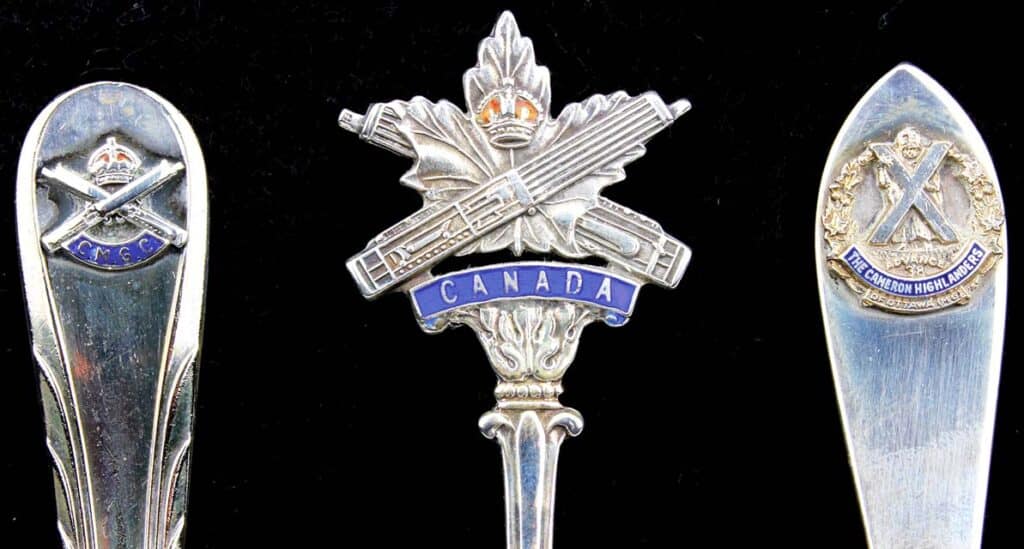
U.S. veteran’s enameled lapel pin for the 7th Cavalry Machine Gun Company with the rare image of the Model 1909 Automatic Machine Rifle (Hotchkiss/ Benet-Mercie). The Model 1909 was used extensively along the Texas/Mexico border and in the Punitive Expedition in Mexico, 1916–1917, to chase Pancho Villa. The 7th Cavalry executed what is regarded as America’s last true Cavalry charge at the Battle of Guerrero in 1916. Button back.
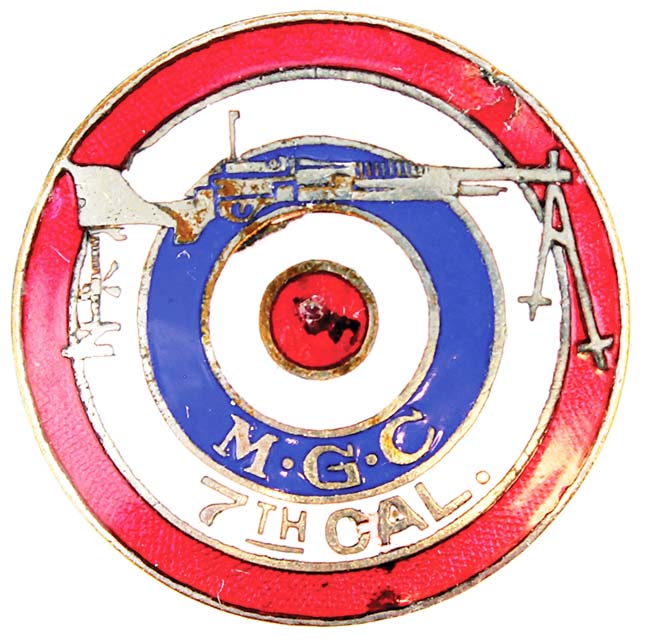
Russian headquarters banner for the 20th Automobile Machine Gun Platoon. This banner originates after the February 1917 revolution by the use of the red background. Made of thick red velvet material with white cotton stitching. The emblem of the Automobile Machine Guns was winged wheels with a horizontally mounted water-cooked Maxim machine gun above. Measures approximately 35×21 inches.
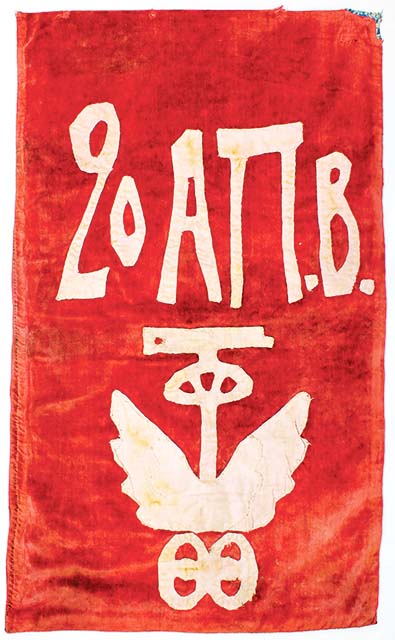
Japanese commemorative discharge sake cup for a soldier in the 15th Infantry. The cup has gold kanji at the top denoting the 15th Infantry, the Imperial Army star and the image of the Type 11 light machine gun that was used extensively during the China campaign. Two raised pink cherry blossoms are below. The cup has a beautiful blue edging around the rim.
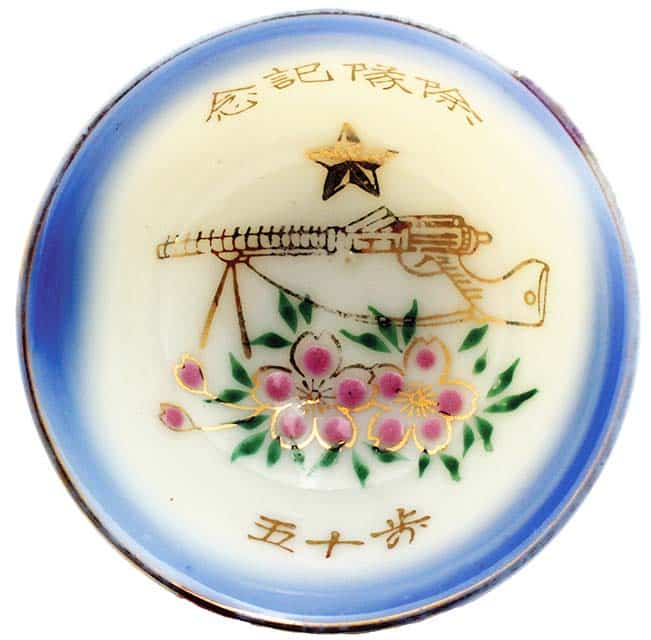
Pre-World War I German Army reservist’s regimental porcelain stein. 0.5 liter standing approximately 11 inches tall. Named to reservist Private First Class Krieg. Marked along the bottom reads: “8.Bad.Inft.Regt.Nr. 169.Lahr. 1912–1914.” Along top of stein in large letters to the front reads in German, “Dauerfeur ist unser Gruls!” (“Full automatic fire is our greeting!”) Various markings around the side scenes translated from German read: “Whether on foot, whether on horse or behind cannon, we guard the home, hearth and the sovereign’s crown;” “The strongest of all armies can do nothing without us. The goddess of victory does not laugh until the machine guns roar;” “Where the machine guns crackle and sow death on death, we stand firm and watch the dawn of victory;” and “In remembrance of my service time.” The 8th Baden Infantry, Regiment No. 169, XIV Corps, 29th Division, 84th Brigade, was based in Lahr, Germany during this reservist’s time of service 1912–1914.





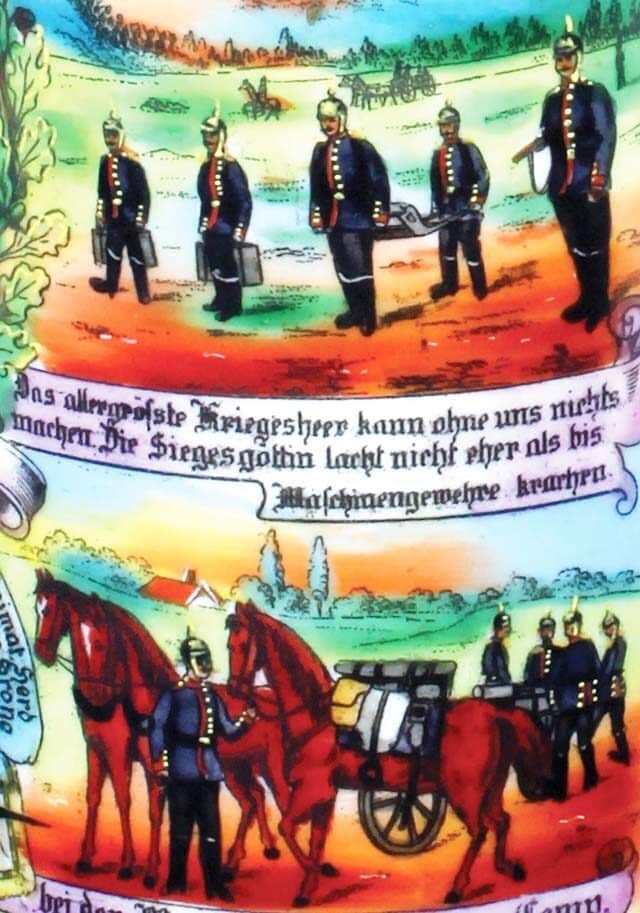

| This article first appeared in Small Arms Review V24N2 (Feb 2020) |



